Industry 4.0 Technologies as an Obsolescence Mitigator for Testing of Mechatronic Systems in Aviation
Abstract
:1. Introduction
1.1. The Structure of the Work
1.2. Problem Statement in the Context of Obsolescence
- The card can be found to be defective—the chance of the defect of an I/O card within first four years of the operation is at 50% [4]. Inevitably, the operating company will face a situation where the defective I/O card is no longer maintained, and a simple replacement is no longer possible. Since the I/O card consists of software and hardware (driver and PCI or VME card), the change of hardware requires the change of software and the reimplementation of all of the accessing proprietary components.
- Following a necessary upgrade of the operating system of the test bench, the new version no longer supports the I/O card. In this case, the I/O card will need a replacement to a variant that supports the new version of the operating system with all the consequences of the first case.
1.3. Design Methods against Obsolescence
1.3.1. Openness of a System
1.3.2. Modularity
1.3.3. HAL
1.4. Objectives Development—Industry 4.0 as a Problem Solver in Obsolescence
2. Materials and Methods
2.1. Relevant Featurs of Avionics and Test Benches
2.1.1. Reactive Real-Time Systems
2.1.2. Components of an Avionics System
2.1.3. Product-Side I/O Example for the ARINC 429
2.1.4. The Test Bench
2.1.5. Description of the Functional Test at Airbus in the HighLift Use Case
- Signal acquisition begins with the reception of a complete message. The message is interpreted in the I/O card and passed through the PCIe bus to the main processor and the operating system.
- The driver for the PCIe I/O card is integrated within the operating system. The driver provides an interface that is addressed by the application software.
- The application layer transforms the data into a format that the applications can interpret.
- This means that a 32-bit ARINC 429 message becomes information after decoding, according to the configuration (example: temperature of hydraulic oil: 50°).
2.2. The Concept of Open, Syntactically Describable Interfaces for the HiL Test Benches
- in the I/O or standards, the software part (driver) is related to the hardware part (I/O card). This means that the I/O standards that contribute to solving the hardware-to-hardware obsolescence must also contribute to solving the software-to-hardware obsolescence and vice versa. For this reason, the hardware-to-hardware obsolescence is only implicitly considered.
- Care is taken to ensure that the hardware part conforms to a standard that is no less common than PCIe. Technologies, based on fieldbuses are more prone to obsolescence than PCIe and Ethernet. For this reason, Ethernet can be used as a standard.
- The avionics system operates under hard real-time conditions. This means that the test bench and its I/O must also operate under those conditions. This point limits the choice of I/O technologies to only a few candidates.
2.3. Interoperability at the System Level
2.4. Interoperability at the Syntax Level
3. Results
3.1. Implementation of the Open and Standardized I/O
3.1.1. Configuration and Integration of the EtherCAT Master
3.1.2. Implementation of the ARINC 429 EtherCAT Slave
3.2. Syntactic Description of the I/O
3.3. Validation
3.3.1. Application Scenario–Test Bench Interconnection
3.3.2. Application Scenario–Test Slat Electric Motor Failure Injection
3.3.3. Application Scenario–Functional Test of the Airbus A350-1000 HighLift System
- routes the ARINC 429 bus over the standardized I/O and does not compromise the real-time capability of the SuT and the test bench,
- can be configured via the test bench and the standardized medium,
- can translate the test bench variables into ARINC 429 messages,
- can translate the ARINC 429 messages into test bench variables.
3.3.4. Measurement Setup for Measuring the Signal Propagation Delay
3.3.5. Replaceability of the I/O Cards Used
4. Discussion and Outlook
4.1. Challenges and Findings
4.2. Implication for Practice
4.3. Brief Discussion on Standards
Author Contributions
Funding
Institutional Review Board Statement
Informed Consent Statement
Data Availability Statement
Acknowledgments
Conflicts of Interest
References
- Seabridge, A.G.; Moir, I. Design and Development of Aircraft Systems, 3rd ed.; John Wiley & Sons: Hoboken, NJ, USA, 2020; ISBN 1119611512. [Google Scholar]
- Rojo, F.J.R.; Roy, R.; Shehab, E. Obsolescence management for long-life contracts: State of the art and future trends. Int. J. Adv. Manuf. Technol. 2010, 49, 1235–1250. [Google Scholar] [CrossRef] [Green Version]
- De Florio, F. Airworthiness: An Introduction to Aircraft Certification and Operations, 3rd ed.; Elsevier Science: Saint Louis, MO, USA, 2016; ISBN 9780081008881. [Google Scholar]
- Robinson, B.; Hughes, B.; Bauer, R.; Harnack, J. Proactively managing obsolescence with test system architecture. In Proceedings of the 2015 IEEE Autotestcon, National Harbor, MD, USA, 2–5 November 2015; pp. 87–92, ISBN 978-1-4799-8190-8. [Google Scholar]
- Lampl, T.; Wolf, T.; Hornung, M. Preliminary design of advanced flight control system architectures for commercial transport aircraft. CEAS Aeronaut. J. 2019, 10, 613–622. [Google Scholar] [CrossRef] [Green Version]
- Spitzer, C.R. Digital Avionics Handbook, 3rd ed.; CRC Taylor & Francis Group: Bosa Roca, FL, USA, 2015; ISBN 9781439868614. [Google Scholar]
- Hans, C.; Hribernik, K. NFF Special Session—Potentials of Applying Methods, Tools, Processes and Knowledge from Testing in Product Development to the NFF Problem. Procedia CIRP 2014, 22, 53–58. [Google Scholar] [CrossRef] [Green Version]
- Jandaurek, K.; Johst, M. Development Trends and Innovations in Aerospace System Testing Using the Example of High-Lift. In Proceedings of the 55th AIAA Aerospace Sciences Meeting, Grapevine, TX, USA, 9–13 January 2017; American Institute of Aeronautics and Astronautics: Reston, VA, USA, 2017. ISBN 978-1-62410-447-3. [Google Scholar]
- Bartels, B.; Ermel, U.; Sandborn, P. Strategies to the Prediction, Mitigation, and Management of Product Obsolence; Wiley: Hoboken, NJ, USA, 2012; ISBN 9781280588426. [Google Scholar]
- DIN EN 62402:2017-09; Obsoleszenzmanagement (IEC 56/1716/CD:2016). Deutsche Institut für Normung; Beuth Verlag GmbH: Berlin, Germany, 2017.
- Sandborn, P. Design for Obsolescence Risk Management. Procedia CIRP 2013, 11, 15–22. [Google Scholar] [CrossRef] [Green Version]
- Zeng, M.L. Interoperability. KO 2019, 46, 122–146. [Google Scholar] [CrossRef]
- Deputy Director for Engineering. Modular Open Systems Approach (MOSA) Reference Frameworks in Defense Acquisition Programs; Deputy Director for Engineering: Washington, DC, USA, 2020. [Google Scholar]
- AUTOSAR GbR. Specification of I/O Hardware Abstraction, 2006. Available online: http://www.autosar.org/download/AUTOSAR_SWS_IO_HWAbstraction.pdf (accessed on 15 August 2022).
- Association for Standardization of Automation and Measuring Systems. ASAM XIL: Generic Simulator Interface, 2.2.0th ed.; ASAM: Höhenkirchen, Germany, 2020. [Google Scholar]
- Langmann, R. Vernetzte Systeme für die Automatisierung 4.0: Bussysteme—Industrial Ethernet—Mobile Kommunikation—Cyber-Physical Systems; Hanser: München, Germany, 2021; ISBN 9783446469846. [Google Scholar]
- Obermaier, R. Handbuch Industrie 4.0 und Digitale Transformation: Betriebswirtschaftliche, Technische und Rechtliche Herausforderungen; Springer Fachmedien Wiesbaden GmbH: Wiesbaden, Germany, 2019; ISBN 9783658245764. [Google Scholar]
- Martinen, D.H.; Lagalaye, M.; Pfefferkorn, J.; Casteres, J. Modular and Open Test Bench Architecture for Distributed Testing. In SAE Technical Paper Series, Proceedings of the AeroTech Congress & Exhibition, Fort Worth, TX, USA, 26 September 2017; SAE International400 Commonwealth Drive: Warrendale, PA, USA, 2017. [Google Scholar]
- Object management Group. OMG Data Distribution Service: DDS, 1.4th ed.; Object Management Group: Boston, MA, USA, 2015. [Google Scholar]
- Franke, M.; Thoben, K.-D. Interoperable Test Cases to Mediate between Supply Chain’s Test Processes. Information 2022, 13, 498. [Google Scholar] [CrossRef]
- West, S.; Ebel, M.; Anderson, M.; Stoll, O.; Poeppelbuss, J.; Khan, M. Nested Lifecycles-Improving the Visibility of Product Lifespans in Smart Factories. Front. Manuf. Technol. 2022, 2, 837478. [Google Scholar] [CrossRef]
- Moir, I.; Seabridge, A.G.; Jukes, M. Civil Avionic Systems, 2nd ed.; Wiley: Chichester, UK, 2013; ISBN 9781118536728. [Google Scholar]
- Aceto, L. Reactive systems: Modelling, specification and verification; Cambridge University Press: Cambridge, UK, 2007; ISBN 9780521875462. [Google Scholar]
- Zöbel, D. Echtzeitsysteme: Grundlagen der Planung, 2nd ed.; Springer Vieweg: Koblenz, Germany, 2020; ISBN 9783662604212. [Google Scholar]
- Moir, I.; Seabridge, A. Design and Development of Aircraft Systems, 2nd ed.; Wiley: Reston, VA, USA, 2013; ISBN 9781118469149. [Google Scholar]
- Adame, T.; Carrascosa-Zamacois, M.; Bellalta, B. Time-Sensitive Networking in IEEE 802.11 be: On the Way to Low-Latency WiFi 7. Sensors 2021, 21, 4954. [Google Scholar] [CrossRef] [PubMed]
- Tanenbaum, A.S.; Feamster, N.; Wetherall, D. Computer Networks, Sixth ed.; Global Edition; Pearson: Harlow, UK, 2021; ISBN 9781292374017. [Google Scholar]
- Wang, X.; Chen, Y.; Fang, D.; Zhong, J.; Wang, Y. Design and Implementation of EtherCAT Master of Gyrowheel under RTX System. In Proceedings of the 39th Chinese Control Conference, Shenyang, China, 27–29 July 2020; IEEE: Piscataway, NJ, USA, 2020; pp. 4515–4520, ISBN 978-9-8815-6390-3. [Google Scholar]
- Salman, T.; Jain, R. Networking Protocols and Standards for Internet of Things. Internet of Things and Data Analytics Handbook; John Wiley & Sons, Inc.: Hoboken, NJ, USA, 2016; pp. 215–238. [Google Scholar]
- Annighoefer, B.; Brunner, M.; Schoepf, J.; Luettig, B.; Merckling, M.; Mueller, P. Holistic IMA Platform Configuration using Web-technologies and a Domain-specific Model Query Language. In Proceedings of the 39th DASC—Digital Avionics Systems Conference, San Antonio, TX, USA, 11–15 October 2020; IEEE: Piscataway, NJ, USA, 2020; pp. 1–10, ISBN 978-1-7281-9825-5. [Google Scholar]
- Aeronautical Radio Incorporated. ARINC 653: Avionics Application Software Standard Interface; ARINC: Singapore, 2006. [Google Scholar]
- Bauer, O.; Mattis, S. Entwicklung von Standards zur Etablierung von Methoden der Modellgetriebenen Entwicklung in der Luftfahrtindustrie im Verbund: STEVE—System-Technik und virtuelle: STEVE—System-Technik und virtuelle Erprobung—Schlussbericht zum Verbundvorhaben LuFo V-1, Poing, 2018. Available online: https://www.tib.eu/en/suchen/id/TIBKAT:1023331144/ (accessed on 15 August 2022). [CrossRef]
- Halle, M.; Thielecke, F. Next generation IMA configuration engineering—From architecture to application. In Proceedings of the 2015 IEEE/AIAA 34th Digital Avionics Systems Conference (DASC), Prague, Czech Republic, 13–17 September 2015. [Google Scholar]
- Application Note ET9300: EtherCAT Slave Stack Code; No. 1.8; Beckhoff Automation GmbH & Co., KG: Verl, Germany, 2014.
- EtherCAT Specification; No. 1.0.4; EtherCAT Technology Group: Nürnberg, Germany, 2007.
- TwinCAT 3: Product Overview; No. 1.11; Beckhoff Automation GmbH & Co., KG: Verl, Germany, 2022.
- RT-Labs. Simple Open EtherCAT Master: SOEM Documentation. Available online: www.rt-labs.com/docs/soem/start.html (accessed on 1 August 2022).
- Pose, F. IgH EtherCAT Master 1.5.2: Documentation; Essen, Germany, 2017. Available online: https://www.iram.fr/~blanchet/ethercat/ethercat_doc_fr.pdf (accessed on 15 August 2022).
- HI-3200, HI-3201: Avionics Data Management Engine/ARINC 429—CAN Bus Bridge; Holt Integrated Circuits Inc.: Aliso Viejo, CA, USA, 2020.
- RT-Labs. Simple Open EtherCAT Slave: SOEM Documentation. Available online: www.rt-labs.com/docs/soes/start.html (accessed on 20 August 2022).
- LAN9552: 2/3-Port EtherCAT Slave Controller with Integrated Ethernet PHYs; Microchip Technology Inc.: Singapore, 2015.
- AM335x Sitara Processors; Texas Instruments Incorporated: Dallas, TX, USA, 2020.
- Industrial Communication Technology Handbook, 2nd ed.; Zurawski, R. (Ed.) CRC Press: Boca Raton, FL, USA, 2015; ISBN 9781315215488. [Google Scholar]
- Lewis, G.A.; Morris, E.; Simanta, S.; Wrage, L. Why Standards Are Not Enough to Guarantee End-to-End Interoperability. In Proceedings of the Seventh International Conference on Composition-Based Software Systems, Madrid, Spain, 25–29 February 2008; IEEE: Piscataway, NJ, USA, 2008; pp. 164–173, ISBN 978-0-7695-3091-8. [Google Scholar]
- Gibbons, M. The Future of FireWire: Is FireWire Dying? 2012. Available online: https://link.gale.com/apps/doc/A307920719/AONE?u=anon~a9ba933f&sid=googleScholar&xid=4bb04488 (accessed on 10 August 2022).
- Item No. 89153: Delock PCI Express Card > 2 x External FireWire B + 1 x External FireWire A; Delock: Dyer, IN, USA, 2017.

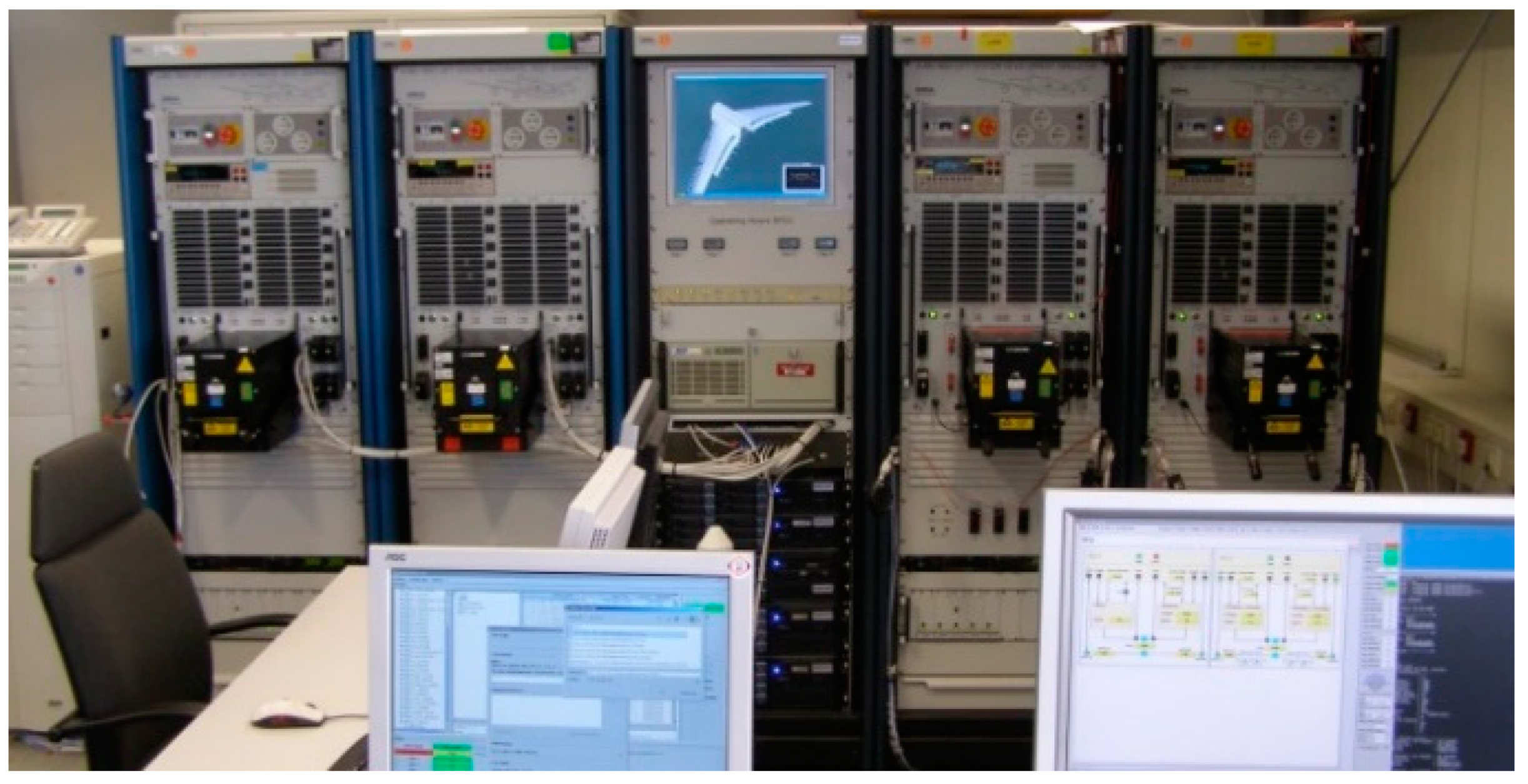

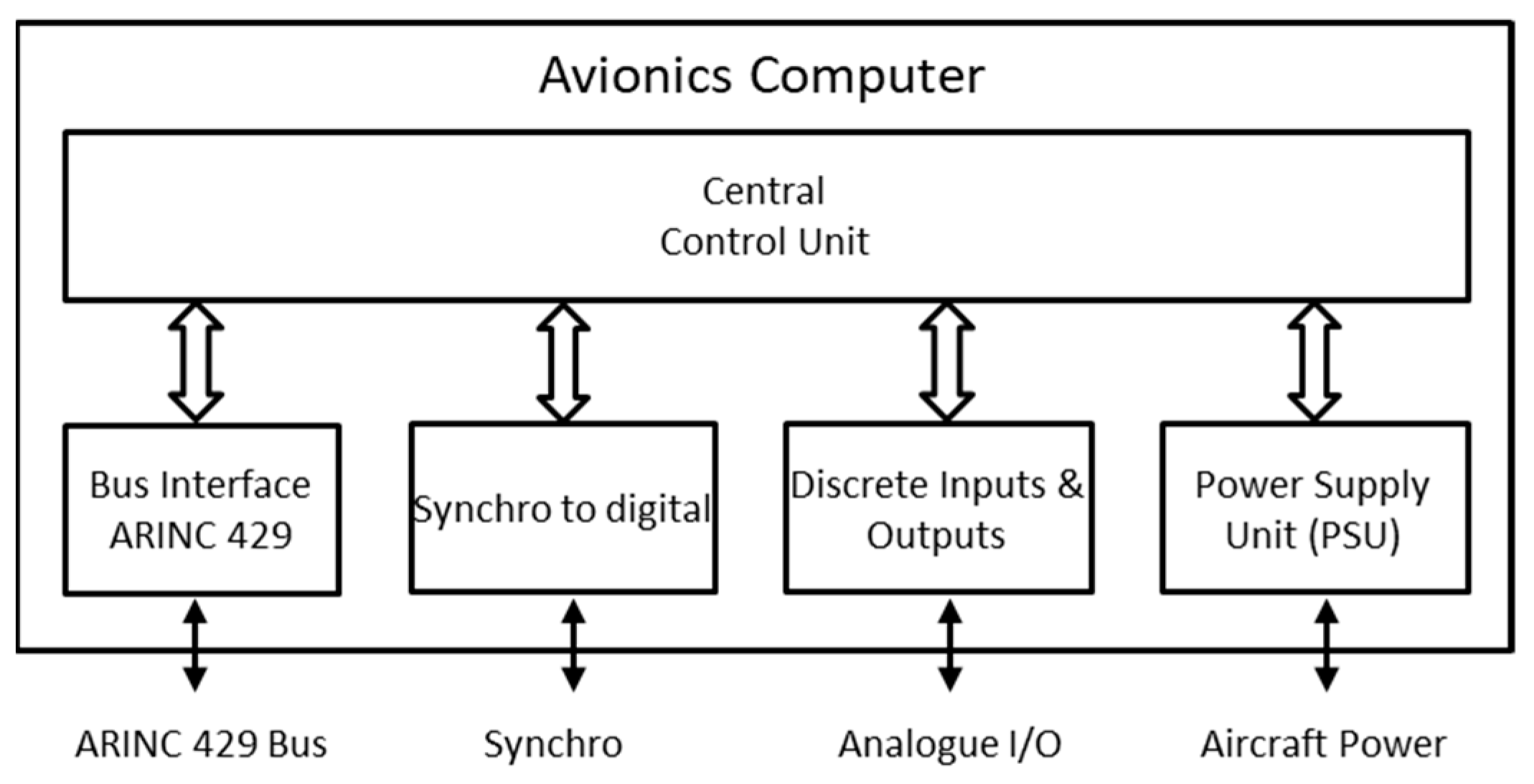


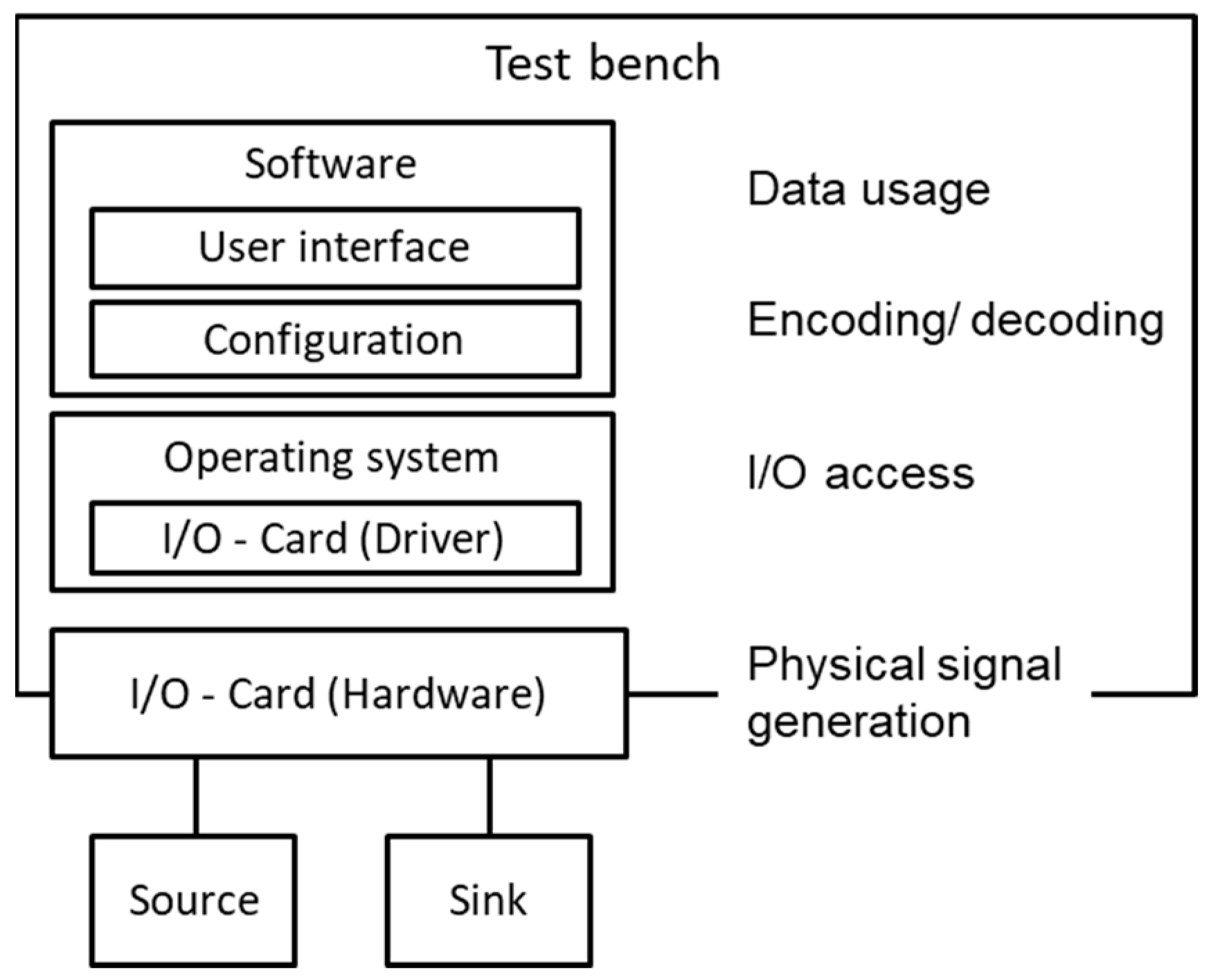
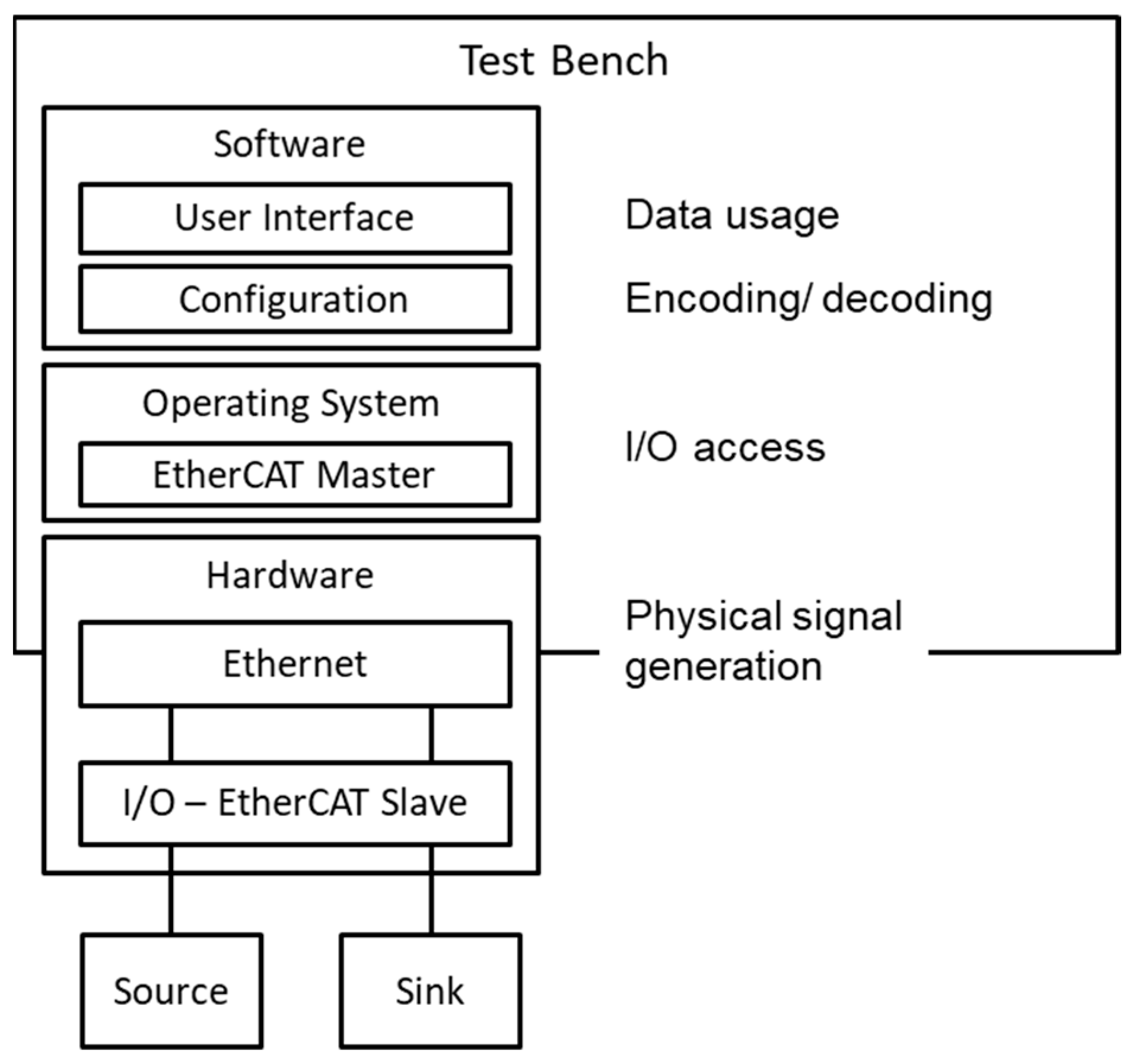



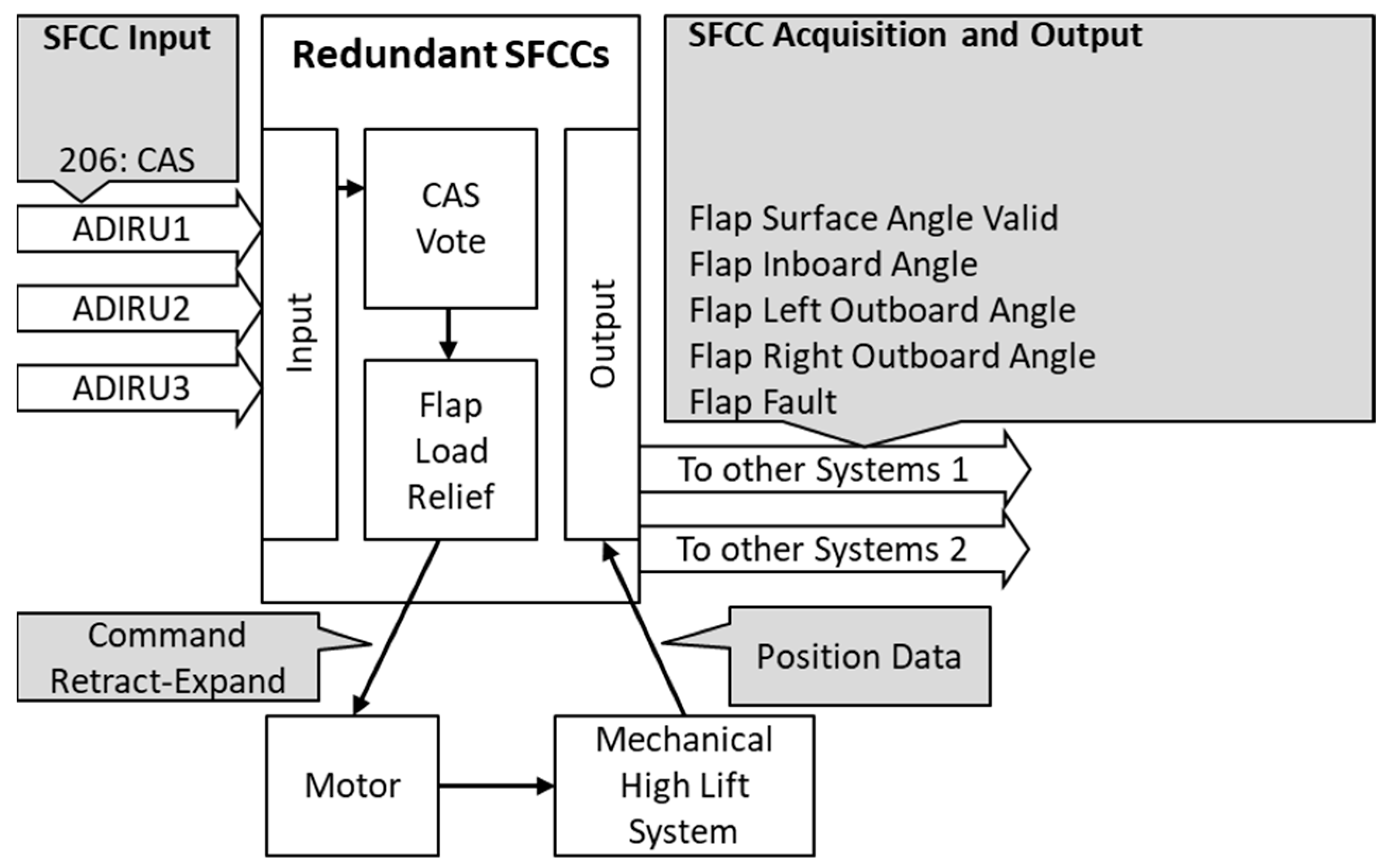

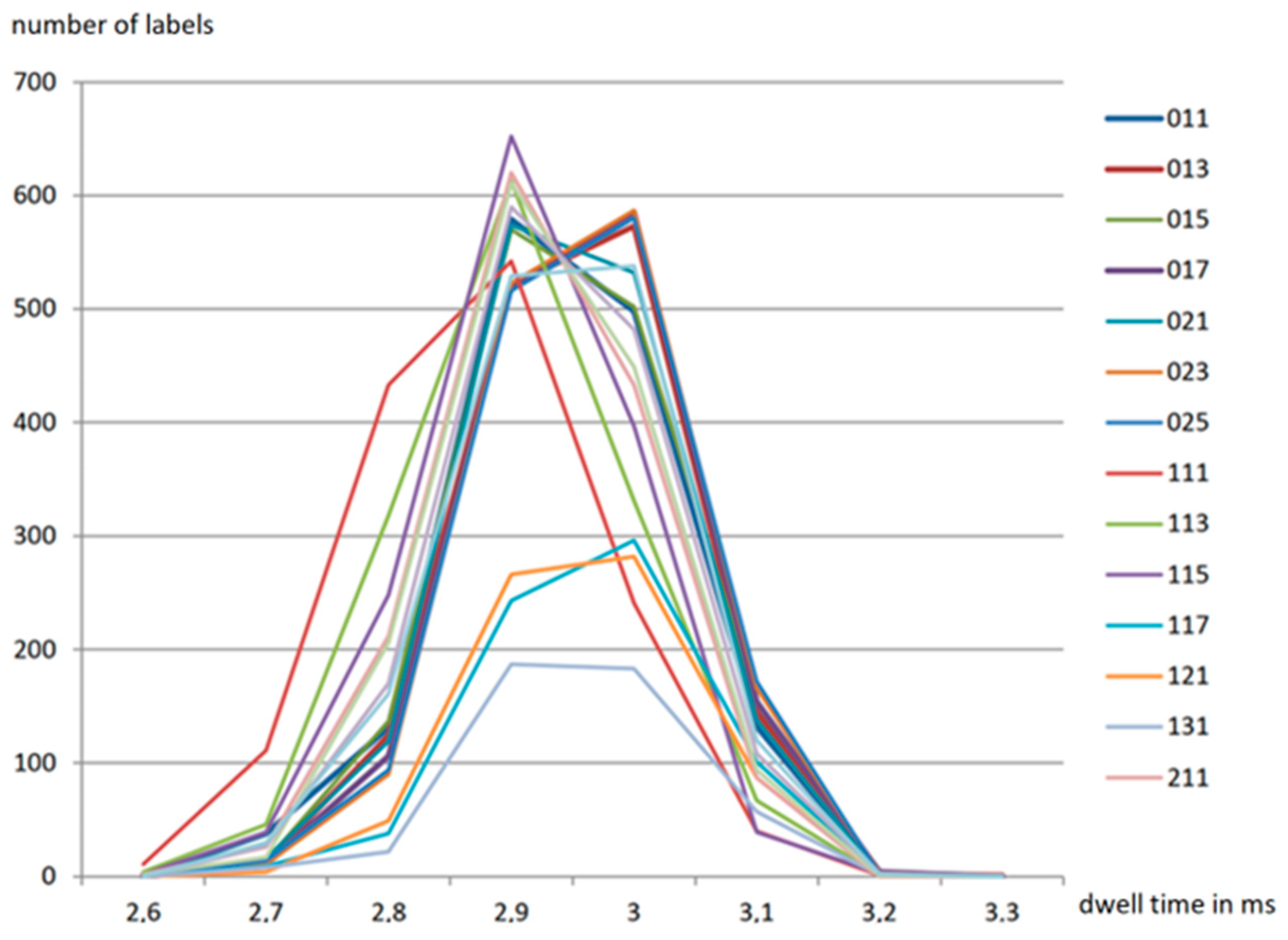
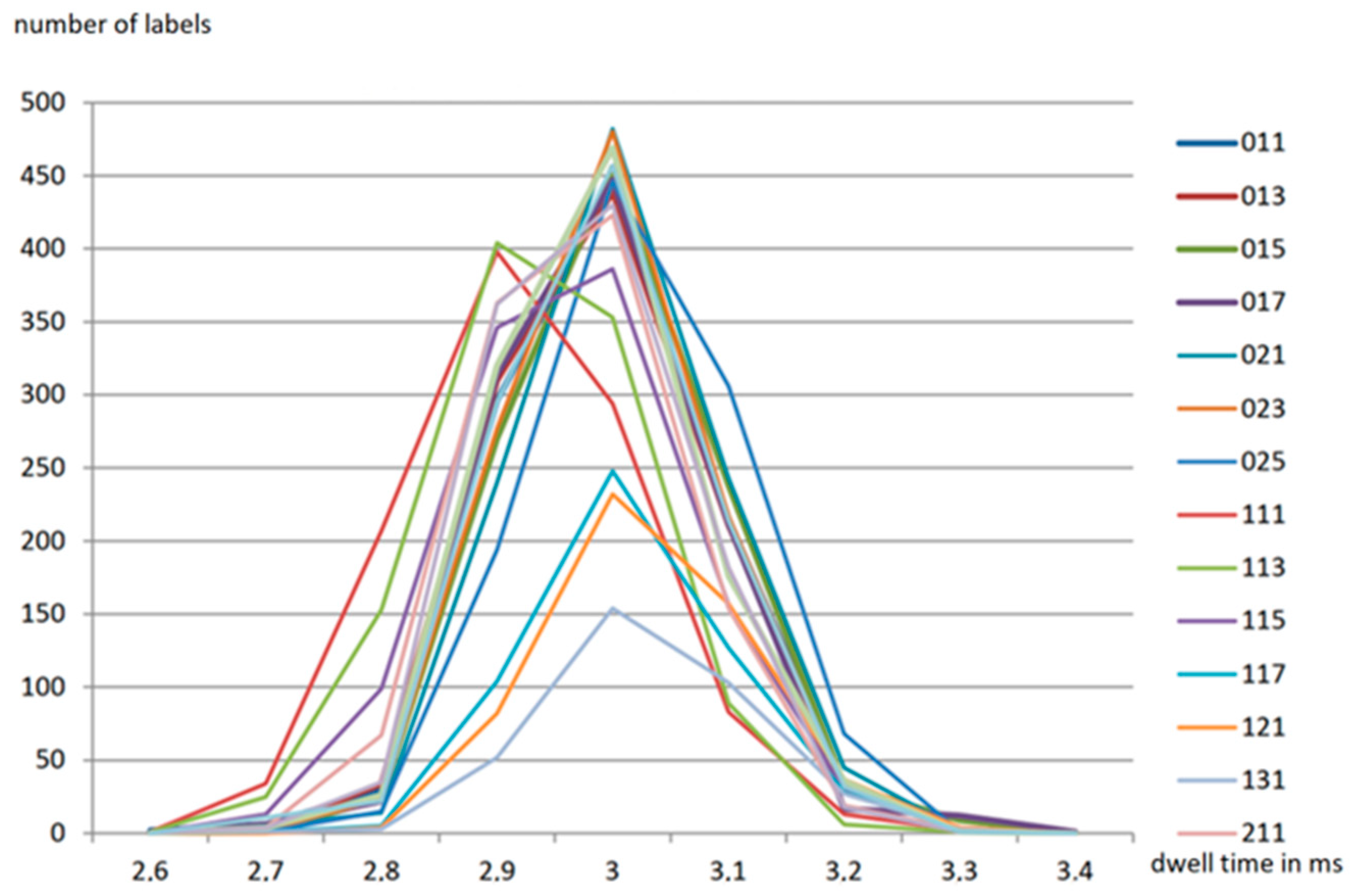

Publisher’s Note: MDPI stays neutral with regard to jurisdictional claims in published maps and institutional affiliations. |
© 2022 by the authors. Licensee MDPI, Basel, Switzerland. This article is an open access article distributed under the terms and conditions of the Creative Commons Attribution (CC BY) license (https://creativecommons.org/licenses/by/4.0/).
Share and Cite
Klein, K.; Thoben, K.-D. Industry 4.0 Technologies as an Obsolescence Mitigator for Testing of Mechatronic Systems in Aviation. Appl. Sci. 2022, 12, 11142. https://doi.org/10.3390/app122111142
Klein K, Thoben K-D. Industry 4.0 Technologies as an Obsolescence Mitigator for Testing of Mechatronic Systems in Aviation. Applied Sciences. 2022; 12(21):11142. https://doi.org/10.3390/app122111142
Chicago/Turabian StyleKlein, Konstantin, and Klaus-Dieter Thoben. 2022. "Industry 4.0 Technologies as an Obsolescence Mitigator for Testing of Mechatronic Systems in Aviation" Applied Sciences 12, no. 21: 11142. https://doi.org/10.3390/app122111142
APA StyleKlein, K., & Thoben, K.-D. (2022). Industry 4.0 Technologies as an Obsolescence Mitigator for Testing of Mechatronic Systems in Aviation. Applied Sciences, 12(21), 11142. https://doi.org/10.3390/app122111142






